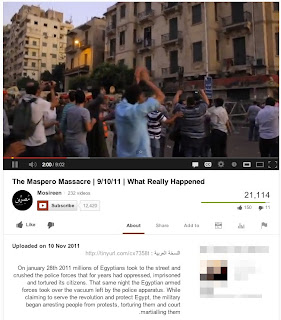Context Is King: Share Your Story
From artists to activists, teachers to students, kids to grandparents, YouTube is a place for people all over the globe to share their stories. YouTube’s Community Guidelines represent the rules of the road for all of them. They state that, in general, YouTube is not a place for shocking or violent content. When material of this nature is flagged by our community, our teams work around the clock to remove anything that breaks the rules.
That said, YouTube is an important global platform for news and information, and we realize that sometimes graphic material is vital to our understanding of the world. It can be posted to document wars or revolutions, to expose an injustice, or to ensure local events are seen globally. Because of this, we take great care when reviewing flagged videos, and allow graphic videos that are intended to have news or documentary value. This is where we need your help.
Why adding context to your video is so important
For all types of content you share on YouTube, but particularly with graphic content, adding context is very important. The information you add in the title and description is what helps other people find and understand your video. It will also help the YouTube team review your video if it does get flagged.
Take a look at the following examples.
Example 1:
That said, YouTube is an important global platform for news and information, and we realize that sometimes graphic material is vital to our understanding of the world. It can be posted to document wars or revolutions, to expose an injustice, or to ensure local events are seen globally. Because of this, we take great care when reviewing flagged videos, and allow graphic videos that are intended to have news or documentary value. This is where we need your help.
Why adding context to your video is so important
For all types of content you share on YouTube, but particularly with graphic content, adding context is very important. The information you add in the title and description is what helps other people find and understand your video. It will also help the YouTube team review your video if it does get flagged.
Take a look at the following examples.
Example 1:
Example 2:
While the content of these videos is similar, the experience of viewing them is quite different. In the first example, the user provides very little information. In the second, we understand what we see, and see that the user’s intent is to educate and tell a story.
How to contextualize your videos: some tips to follow
Our goal at YouTube is to allow as much content as possible on the site, and still ensure that our Community Guidelines are followed. It is a delicate balancing act, and we depend on our uploaders to help. So whether you’re a performance artist, a citizen journalist or a human rights activist, remember: context is king. The information you add to your video helps tell your story, find an audience, and make an impact--it could even help your video be an important part of history.
Ali Glenesk, Policy Associate, recently watched “Grandma’s Advice.”
How to contextualize your videos: some tips to follow
- Provide an informative and relevant title--you can pack in a lot of information here, even if you’re on the move on a mobile device
- Fill your description with information: who, what, when, where and why did it occur?
- Think about narrating what you see as you film, or add detail later using our annotations tool
- Feel free to link to relevant websites, such as a related news story or artist statement
- Organizations such as Witness and Small World News also produce great tip sheets
- Remember YouTube’s tools--if your footage is sensitive and requires visual anonymity, check out YouTube’s blurring tool. If you feel your content was removed in error, you can appeal the decision.
Our goal at YouTube is to allow as much content as possible on the site, and still ensure that our Community Guidelines are followed. It is a delicate balancing act, and we depend on our uploaders to help. So whether you’re a performance artist, a citizen journalist or a human rights activist, remember: context is king. The information you add to your video helps tell your story, find an audience, and make an impact--it could even help your video be an important part of history.
Ali Glenesk, Policy Associate, recently watched “Grandma’s Advice.”

